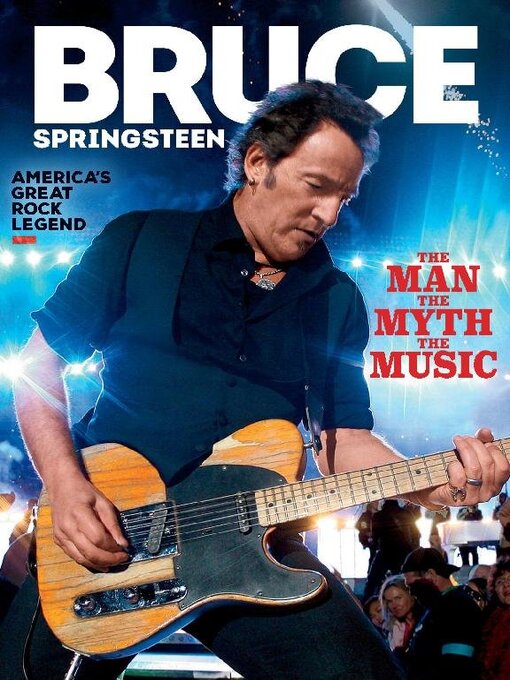BRUCE SPRINGSTEEN
WHAT COULD THE FUTURE POSSIBLY HOLD? • Nearly 25 years ago, Bruce Springsteen sat on a high stool in front of a blazing fireplace in a guest house on his property in southern New Jersey, and talked about the music scene he had entered as a young man 25 years earlier. Springsteen was nearing 50, and age was clearly on his mind.
“I SAW ROCK & ROLL FUTURE & ITS NAME IS BRUCE SPRINGSTEEN” • What the future held, quite literally, was Bruce Springsteen. Famously, a young writer named Jon Landau caught Bruce and the E Street Band at the Harvard Square Theatre in Cambridge, MA, on May 9, 1974, and declared in his column in the Boston Real Paper (notably titled “Growing Young With Rock and Roll”), “I saw rock and roll future and its name is Bruce Springsteen.”
GREETINGS FROM ASBURY PARK, N.J. • In 1972, Springsteen’s manager, Mike Appel, finagled an audition for him in the office of the legendary John Hammond at Columbia Records. Hammond had previously signed Bob Dylan, Billie Holiday and Aretha Franklin, so arranging this meeting was no small feat.
THE TOWN THAT BUILT BRUCE
“MORE THAN RICH, MORE THAN SUCCESSFUL, MORE THAN HAPPY, I WANTED TO BE GREAT” • With the release of Born to Run in the summer of 1975, Springsteen was on the musical map in a big way. Astonishingly, he appeared on the covers of both Time and Newsweek, the two largest and most significant news magazines in the country at the time, and ones not inclined to prominently feature rock artists on the prime real estate of their covers, let alone one who still would’ve been essentially unknown to most of their readers.
THE AMERICAN DREAM • After the stringency of Darkness on the Edge of Town, Springsteen was determined to restore some of the fun that he had stripped from his sound. His next album The River (1980) achieved that, while simultaneously continuing his exploration of grown-up themes in his songwriting. That duality made for a sprawling double album that on its surface seemed pulled into two conflicting directions.
“TWO FACES HAVE I” • In the wake of Born in the U.S.A.’s massive sales, Springsteen began playing stadium shows and took his place among the biggest rock stars in the world. In 1986 he released a box set (three CDs, five vinyl albums) of live performances beginning in 1975 that only enhanced his already peak reputation as a performer. It seemed impossible for him to get any bigger.
“ I CAN’T PROMISE YOU LIFE EVERLASTING, BUT I CAN PROMISE YOU LIFE RIGHT NOW” • In 1995, Springsteen won an Academy Award, along with three Grammys, for “Streets of Philadelphia,” a powerful, introspective ballad he wrote for Philadelphia, Jonathan Demme’s affecting film about a gay lawyer who is fired by his firm when it’s discovered that he has AIDS. The disease was still regarded as a dangerous subject for a mainstream movie, so it’s to Springsteen’s credit that he immediately agreed to write a song for it. He had never before written a song specifically for a film.
“WE TAKE CARE OF OUR OWN” • On the afternoon of September 11, 2001, Springsteen stood on the beach near his New Jersey home and watched the smoke rise from the ashes of the fallen towers on the southern tip of Manhattan. Hearing that a plane had struck one of the towers of the World Trade Center, he initially thought that it was probably a private...

